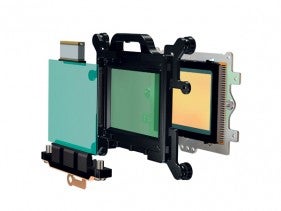How to clean your sensor Page 3
 For those without the bottle to attempt cleaning a camera’s sensor themselves, there are professionals who’ll be happy to take on the job.
For those without the bottle to attempt cleaning a camera’s sensor themselves, there are professionals who’ll be happy to take on the job.
Of course, it costs money and the price will vary depending on the extent of the clean-up necessary. The camera’s manufacturer will be able to service it for you, but even if it’s still under warranty they’ll charge you, as dust is a mainentance issue, not a fault (unless it was there when you bought it).
There are also loads of independent repair companies in the UK, many authorised by manufacturers to carry out work on their behalf, so track down those local to you via www.yell.com. Have a word with fellow photography enthusiasts too, to get their personal recommendations.
Canon’s self cleaning sensor
The sensor on the Canon EOS 400D has two filters in front of it: the optical low-pass filter and an Infrared (IR) filter.
The IR filter has an anti-static coating applied to repel dust, and is also connected to a piezoelectric element which uses hi-frequency vibrations to shake dust from the filter for a period of approximately one second after each start-up. The EOS 400D also incorporates an internal Dust Delete Data system, which maps the position of visible dust on the sensor. Dust spots can then be deleted automatically after the shoot with Digital Photo Professional software.
Anti dust for scanners
Scanning is a practice more blighted by dust than photography is. Often, you’ll be working with transparencies, which attract dust and scratches very easily. Scanner manufacturers are aware of this and have devised systems that attempt to remove aberrations at the scanning stage, saving you a lot of time on retouching.
For example, Canon offers FARE for film scanning and QARE for reflective scans. Film Automatic Retouching and Enhancement employs infrared light that passes through the transparency, but not through surface defects. The data from the infrared light is analysed by clever software that plots exactly where the problem areas are and eliminates them. It’s similar in concept to Canon’s Digital Photo Professional software that intelligently maps dust in images captured by a stills camera.




